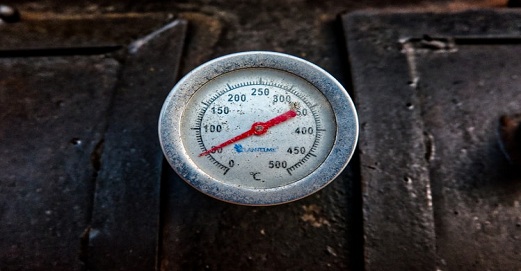When we discuss the topic of the pyrometer, we generally talk about its advantages, functionality, and the way it works to give the measurements of thermal radiation emitted from a surface.
But today, we are not here to talk about the same old things that you already know. This blog will help you find the answers for determining the best pyrometer. Give a read till the end of the blog and buy a pyrometer thermometer that is best for your needs.
1. Target Material
If we find out about the target material that needs to be measured then it can guide us to determine the kind of technology that would be required for an application.
For instance, we know this for sure that for applications such as measuring textiles or papers that have high-emissivity and are made of non-reflective materials, a long-wavelength sensor pyrometer is required.
While on the other hand, for steel applications, the recommended technology to be used is a ratio pyrometer that can deal with scale and emissivity variation. Plus, for challenging and unique target materials like copper or aluminum, a multi-wavelength pyrometer technology is the perfect choice.
2.Temperature Range of Interest
You’ve got to know about the temperature range of interest to regulate a temperature measurement application. This is also related to the wavelength of the pyrometer thermometer.
The general Rule of Thumb states that the longer the wavelength, the lesser temperature range you can measure. Paradoxically, the shorter wavelength of the device can measure higher temperature readings.
Another significant factor to keep in mind is that pyrometers of short wavelength would generate less amount of error than that by long-wavelength pyrometers.
3. Method of Heating
The method of heating used in an application influences the category of pyrometer used. If the heating process of an object involves a flame or is within a furnace that has combustible gases, it is apt to choose a pyrometer of a wavelength that views through them.
For applications that have induction heating method, a fiber-optic designed pyrometer is recommended that can read through the induction heating coils. Choosing the correct wavelength of the device can help you determine apt readings.
4. Size of the Target
The size of the target will help us decide the optical resolution of a pyrometer thermometer. For applications of single-wavelength sizes, it is significant for you to take note that a full field-of-view is obtained.
So, for the measurement of a small target application, it is recommended to use a ratio pyrometer that has a full field-of-view. Using the ratio pyrometer also helps you to avoid any sort of misalignment in the readings.
5. The Distance of the Target from the Pyrometer
This factor will not just guide us to determine the optical resolution of the device but also the technology required for the readings. For certain applications, the physical barriers will not permit a pyrometer to be attached to the close proximity of the process.
For such situations, it is recommended to tightly configure the optics so that the physical obstructions can be avoided. Another consideration you can take is to use fiber optic configuration to reach long-distance targets.
These are some of the vital things that you must consider for determining the best use of pyrometer for applications. Now that you know the essentials factors, it is time for you to buy pyrometer thermometer from a readily available store.




